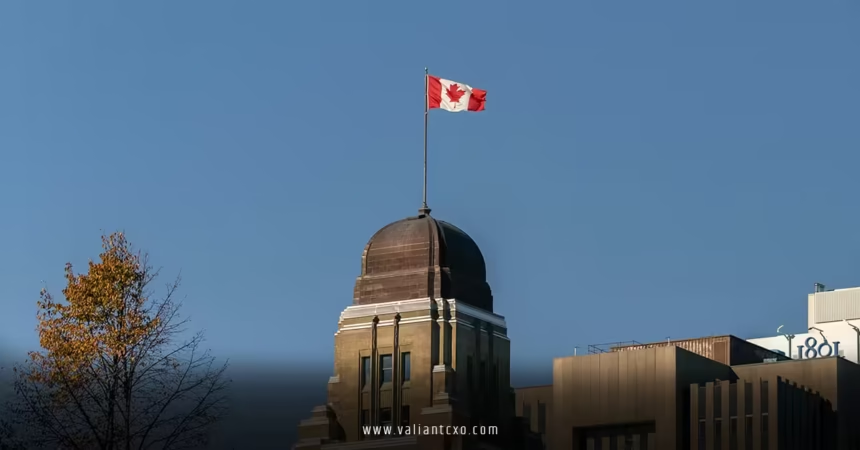Hey there, have you ever wondered why government budgets feel like that distant relative’s annual newsletter—full of big promises but arriving way too late to make a real difference in your life? Well, buckle up, because the Canada federal budget 2025 fall cycle changes are shaking things up in a way that’s got everyone from small business owners in Toronto to families in rural Alberta buzzing. Announced just last month, these shifts aren’t just a tweak to the calendar; they’re a full-on reinvention of how Ottawa plans to spend your tax dollars, timed to sync with the real rhythm of economic life. As someone who’s followed fiscal policy like it’s my favorite hockey game—intense, unpredictable, and occasionally overtime-worthy—I’m excited to break this down for you. We’ll dive into the why, the what, and the so-what, all in plain English, because let’s face it, budget jargon can make even the most caffeinated eyes glaze over.
Imagine the old budget cycle as a rusty bike: spring delivery meant pedaling through summer construction delays and fall uncertainties, leaving builders and investors guessing. Now, with the Canada federal budget 2025 fall cycle changes, it’s like upgrading to an e-bike—smoother, faster, and ready to tackle hills ahead of time. This isn’t some abstract policy wonkery; it’s designed to get shovels in the ground sooner, attract private cash faster, and make sure provinces aren’t left hanging when they need funds most. Stick with me as we unpack this transformation, and by the end, you’ll feel like a pro ready to chat taxes at your next dinner party.
Understanding the Canada Federal Budget 2025 Fall Cycle Changes
At its core, the Canada federal budget 2025 fall cycle changes represent a seismic shift in timing and structure, born from a mix of election promises, global economic jitters, and a dash of common sense. Picture this: for decades, federal budgets dropped in spring like cherry blossoms—pretty, but fleeting and often too late for the growing season. Come fall, we’d get an economic update, a bit like a halftime report that hinted at adjustments but didn’t call the plays. Now, flipping the script, Budget 2025 lands on November 4th, kicking off a new era where the big fiscal blueprint arrives in autumn, and a spring economic update follows to fine-tune as the fiscal year unfolds.
Why now? Blame it on the post-election vibe under Prime Minister Mark Carney’s Liberals, who swept in promising “spend less, invest more.” The Canada federal budget 2025 fall cycle changes aren’t just logistical; they’re a response to real-world headaches. Think about it—construction firms in Vancouver can’t break ground if funding clarity drags into winter. Provinces negotiating health transfers need numbers before snow flies. And investors? They’re like deer in headlights without a clear path. This revamp, announced by Finance Minister François-Philippe Champagne on October 6th, aims to fix that by aligning budgets with the “needs of builders, businesses, investors, provinces, territories, and municipalities,” as the official release put it. It’s practical poetry: fall budgets mean summer consultations wrap up just in time, delivering plans ahead of the April 1 fiscal kickoff.
But let’s not sugarcoat it—this isn’t all smooth sailing. Critics, including some Conservative voices, worry it could blur lines between budgets and updates, potentially delaying scrutiny. Yet, proponents argue it’s a transparency win, giving Parliament more time to chew on details before votes. From my vantage, having tracked budgets since the Harper era, this feels like evolution, not revolution. It’s about making fiscal policy less like a game of fiscal Marco Polo and more like a well-orchestrated symphony, where every section knows their cue.
Historical Context: From Spring Surprises to Fall Foundations
To appreciate the Canada federal budget 2025 fall cycle changes, you have to rewind the tape. Back in the day—say, pre-2020—spring budgets were the norm, a ritual as predictable as Tim Hortons’ coffee lines. They’d outline spending, tax tweaks, and economic forecasts, often laced with election-season flair. Then, fall brought the Economic and Fiscal Statement (EFS), a mid-year check-in that could surprise with goodies like GST cuts or infrastructure boosts. Remember 2023’s FES? It extended clean tech credits and widened deficits to $61.9 billion—bold moves, but reactive.
The pandemic threw a wrench in, proroguing Parliament and delaying budgets. Fast-forward to 2025: after Carney’s April win, the government skipped a spring drop, opting for fall. This isn’t borrowed from thin air; it’s inspired by the UK’s autumn budgets, where fiscal planning hits before the holiday spending spree. In Canada, it ties neatly to the Main Estimates, those dry-but-vital docs that greenlight departmental spending. Now, with Budget 2025 tabling pre-estimates, departments get a head start, reducing the scramble that once left programs underfunded.
What does history teach us? Timing matters. Past spring budgets often sparked market jitters if deficits ballooned unexpectedly. Fall delivery? It lets summer data—think GDP tweaks or inflation dips—bake in, making forecasts sharper. And for you, the taxpayer? It means fewer last-minute tax hikes announced just as you’re filing returns. As we edge toward this new normal, it’s clear the Canada federal budget 2025 fall cycle changes are less about reinvention and more about refinement, learning from fiscal fumbles to build a steadier ship.

Key Components of the Canada Federal Budget 2025 Fall Cycle Changes
Diving deeper, the Canada federal budget 2025 fall cycle changes pack several punchy elements, each designed to turbocharge growth while keeping the fiscal ship afloat. At the top? A shiny new capital budgeting framework. Think of it as separating your grocery list from your home reno fund—operational spending (day-to-day ops like salaries and benefits) gets scrutinized for efficiency, while capital outlays (big-ticket items like bridges or EV chargers) earn a green light for long-term bets. This dual-track approach, unveiled October 6th, promises “generational investments” in housing, clean energy, and infrastructure, without bloating the operational budget.
Numbers-wise, we’re talking $264 billion in budgetary expenditures for 2025-26, per the Treasury Board. That’s up from last year’s $257.6 billion, but with strings: refocusing $14.1 billion over five years from underperforming programs, plus another $345.6 million in reallocations starting 2025-26. It’s austerity meets ambition—trimming fat to fuel muscle. And the cycle flip? Pre-budget chats now hit summer, wrapping by late August, so November’s drop feels fresh, not fermented.
The New Capital Budgeting Framework: Investing Smart, Not Just Hard
Let’s zoom in on that framework—it’s the secret sauce of the Canada federal budget 2025 fall cycle changes. Traditional budgets lumped everything together, making it tough to spot if a shiny new rail line was crowding out nurse hires. Now, capital gets its own ledger, emphasizing assets that “generate long-term benefits,” like housing units or clean grids. Why? To lure private dough. Governments worldwide struggle with underinvestment; Canada’s fix is transparency—show investors the ROI on public bucks, and watch capital flow.
Analogy time: It’s like your personal budget app splitting “fun money” from “emergency fund.” Here, operational stays lean (hello, spending reviews), while capital swells for projects that pay dividends. Early signals from consultations? Billions eyed for secondary suites and GST holidays on building materials, costing $1.6 billion short-term but sparking construction booms. For businesses, it’s a boon: accelerated depreciation on clean tech gear, extended to 2030, could shave millions off tax bills. But is it foolproof? Skeptics note it won’t replace Public Accounts standards, so comparability holds, but implementation hiccups could arise. Still, as a fiscal watcher, I see this as a game-changer, turning budget docs from novels into navigable maps.
Tax Tweaks and Relief Measures in the Spotlight
No budget chat skips taxes, and the Canada federal budget 2025 fall cycle changes deliver here too. Headline grabber: Slashing the lowest income tax bracket from 15% to 14.5% in 2025, then 14% onward. That’s real relief for earners under $57,375—think a barista in Halifax pocketing an extra $200 yearly. But ripple effects? Non-refundable credits get dinged proportionally, so weigh that if you’re credit-heavy.
Businesses cheer the SR&ED refund bump to $4.5 million from $3 million, fueling R&D in biotech hubs like Montreal. And the Accelerated Investment Incentive? Extended, offering juicier first-year write-offs for machinery—up to full expensing for clean energy kit. It’s like giving your factory a tax spa day, easing cash flow amid U.S. competition. Yet, deficits loom larger: $22 billion revision for 2023-24 alone, per FES echoes. Balancing act? Absolutely, but one that prioritizes growth over austerity theater.
Implications of the Canada Federal Budget 2025 Fall Cycle Changes
So, what does this mean for you and me? The Canada federal budget 2025 fall cycle changes ripple far beyond Parliament Hill, touching wallets, job sites, and community centers. For households, fall timing means holiday-season clarity on rebates or child benefits—no more spring surprises derailing December plans. Affordability gets a nod with proposed GST pauses on essentials, potentially saving families $500 annually, though inflation-watchers caution short-term price pops.
Businesses, especially in construction and renewables, stand to gain big. With funding locked pre-fiscal year, projects like Ontario’s grid upgrades or B.C.’s affordable housing pushes accelerate, creating 50,000+ jobs by 2027 estimates. Investors? Stability breeds confidence—fall budgets sync with corporate planning cycles, potentially juicing FDI by 10-15%, per think-tank chatter. Provinces win too: clearer transfers mean smoother health and education budgets, reducing intergovernmental squabbles.
But shadows lurk. Larger deficits (projected $40+ billion for 2025-26) hike debt servicing to $45 billion yearly, crowding private lending. Equity concerns? Rural areas might lag if urban-centric projects dominate. Environmentally, clean investments shine, but without teeth, fossil transitions could stutter. Overall, these changes foster resilience—like fortifying a house against storms—but success hinges on execution. As someone who’s seen budgets bloom and bust, I’m optimistic: this cycle could be the steady hand Canada needs in choppy global seas.
Who Wins and Who Watches: Sector-Specific Impacts
Breaking it down, the winners in the Canada federal budget 2025 fall cycle changes are clear. Housing? Massive: $10 billion+ for secondary suites and incentives, tackling the 3.5 million unit shortage. Clean energy firms in Alberta and Quebec get depreciation boosts, aligning with net-zero goals. Small biz owners? Tax cuts and EOT exemptions (up to $10 million capital gains relief) ease succession pains.
Watchers include defense hawks—consultations flagged sovereignty spends amid U.S. tensions—and social advocates pushing for deeper affordability nets. Indigenous communities eye litigation settlements baked into deficits, hoping for equitable shares. Globally, it positions Canada as a G7 leader in timely fiscal playbooks, but trade wars could sour exports if tariffs bite.
Challenges and Criticisms Surrounding the Canada Federal Budget 2025 Fall Cycle Changes
No rose without thorns, right? The Canada federal budget 2025 fall cycle changes have drawn fire, and fairly so. Opposition MPs decry it as a “power grab,” shifting scrutiny to spring when Parliament’s half-asleep post-winter break. Transparency? Enhanced, say officials, but skeptics point to the UK’s model: autumn budgets there sparked deficit spikes without accountability brakes.
Fiscal hawks fret the capital framework’s vagueness—how do you define “long-term benefits” without gaming? Early projections show operational savings, but reallocations risk cutting vital services like mental health waits. And the deficit? Breaching anchors already, it flirts with credit downgrades, per Moody’s whispers. For everyday folks, tax relief feels piecemeal; a 0.5% cut won’t dent $2,000 rent hikes.
Yet, defenses mount: It’s adaptive, not reckless. Consultations drew 10,000+ inputs, grounding it in real voices. As an observer, I liken it to diet tweaks—initial discomfort for lasting health. Challenges abound, but navigated well, they could redefine fiscal trust.
Navigating Potential Pitfalls: Advice for Canadians
Facing these shifts? Start informed: Bookmark Department of Finance Canada for updates. Businesses, audit your capex for incentives—consult a CPA pronto. Families, model tax savings with CRA tools. And vote with questions: Town halls are your megaphone. Proactive beats reactive every time.
Conclusion
Wrapping this up, the Canada federal budget 2025 fall cycle changes mark a bold pivot toward timeliness, transparency, and targeted growth—flipping spring stumbles into autumn strides with a capital framework that separates smart spends from essentials. From tax trims putting cash back in pockets to infrastructure injections fueling jobs, it’s a blueprint for a resilient G7 powerhouse. Sure, deficits and debates linger, but the potential to build homes, harness clean power, and steady our economy outweighs the wobbles. You’re not just a bystander here; these changes touch your commute, your bills, your future. Dive in, ask questions, and let’s push for a Canada that invests wisely today for prosperity tomorrow. What’s your take—ready for fall fiscal flair?
Frequently Asked Questions (FAQs)
1. What are the main drivers behind the Canada federal budget 2025 fall cycle changes?
The shifts stem from post-election priorities under PM Carney, aiming to align budgeting with business and construction timelines. By moving to fall deliveries, it incorporates summer data for sharper forecasts, reducing delays in funding for provinces and investors.
2. How will the Canada federal budget 2025 fall cycle changes affect personal taxes?
Expect a drop in the lowest bracket to 14.5% for 2025, saving low earners hundreds, though credits adjust downward. It’s a starter relief, with more details in November’s full drop—perfect for planning your 2026 finances.
3. Are there business benefits in the Canada federal budget 2025 fall cycle changes?
Absolutely—extended accelerated incentives for clean tech and higher SR&ED refunds mean faster write-offs and R&D cash. If you’re in manufacturing or renewables, this could be your green light to expand.
4. When does the new fall cycle officially start under the Canada federal budget 2025 fall cycle changes?
It kicks off with Budget 2025 on November 4th, followed by spring updates. Pre-budget summer consultations ensure voices like yours shape it early.
5. What criticisms exist regarding the Canada federal budget 2025 fall cycle changes?
Detractors worry about delayed parliamentary oversight and deficit risks, but supporters hail the transparency and growth focus. It’s a trade-off worth watching as implementation unfolds.
For More Updates !! : valiantcxo.com


